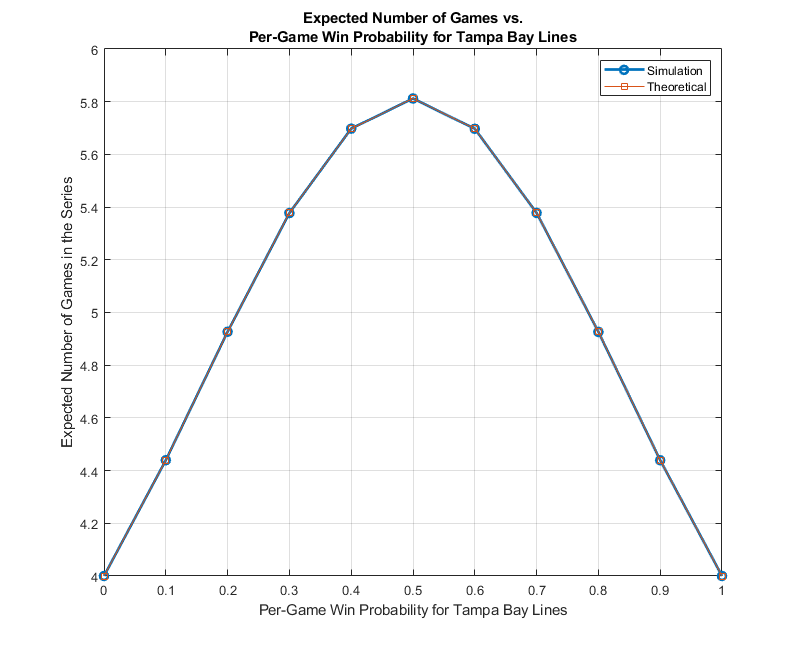



October 17, 2021
The American League Championship Series of Riddler League Baseball determines one of the teams that will compete in the Riddler World Series. This year’s teams — the Tampa Bay Lines and the Minnesota Twin Primes — are evenly matched. In other words, both teams are equally likely to win each game of the best-of-seven series.
On average, how many games will the series last? (Note that the series ends as soon as one team has won four games.)
Expected number of games =
Explanation:
First of all, I love those team names! Riddler League Baseball fans must also be fans of math as well. Some other team ideas I had were:
LA Angles
— David Ding (@DavidYiweiDing) October 15, 2021
Alright, cheesy team names apart, let's tackle the actual puzzle. I will do this by solving a more general case, which asks the question: on average, how many games will the series last if the Tampa Bay Lines have a probability of
Before delving into the problem, let me clearly outline a few assumptions:
There are many ways to solve the problem given the above assumptions, including using a Markov Chain with an unsightly number of states and transitions. Since we are only interested in the number of games played and not the actual probability, we can simply the solving process by making a key observation:
The series ends in
At the first glance, it might seem that the above statement is not robust, as there could be opportunities for counterexamples or double counting. However, in fact, the observation is quite foolproof. For one thing, there is no way for the losing team to win 4 games out of the past
Therefore, we can go ahead and translate the above observation into the language of mathematics. Let
The last lines are from the independence assumption we made about the problem setup. The probability that Tampa Bay Lines win 3 out of
By symmetry, the probability that Minnesota Twin Primes clinch the series in
Let
As reminder,
We now have an expression to denote the expected number of games:
In particular, the solution to the original puzzle is when
We can also simulate the scenario for different values of
function numGames = monteCarloGames(p)
% Given the probability of winning in p, get the expected number of
% games in monte-carlo fashion
numTrials = 1e7;
sumGames = 0;
for k = 1:numTrials
sumGames = sumGames + monteCarloHelper(p);
end
numGames = sumGames / numTrials;
end
function numGames = monteCarloHelper(p)
% One trial of series
aWin = 0;
bWin = 0;
numGames = 0;
while aWin < 4 && bWin < 4
if rand < p
aWin = aWin + 1;
else
bWin = bWin + 1;
end
numGames = numGames + 1;
end
end
This yields the following result:

As one can see, the simulation is pretty close to our theoretical result. Furthermore, we can remark on several insights obtained from the graph. Namely:
Let's have one more interesting observation. Let's calculate the probability that the series will go into 7 games for two evenly-matched teams. That would be:
Interestingly enough, for MLB, there have been 116 World Series played, of which 40 have reached seven games. That's a game-seven rate of 0.345, which is comparatively close to the evenly matched scenario presenting by two battling teams from Riddler League Baseball. Looks like whether we are in RLB or MLB, some things don't ever change!